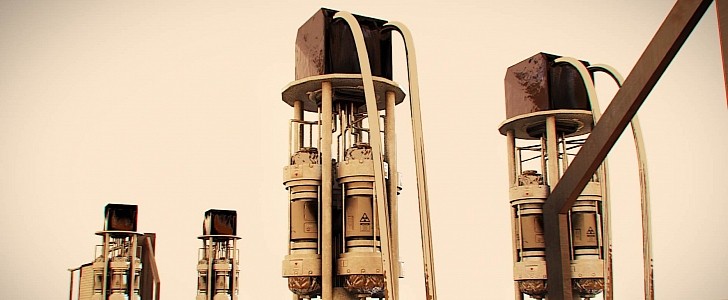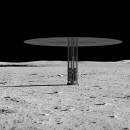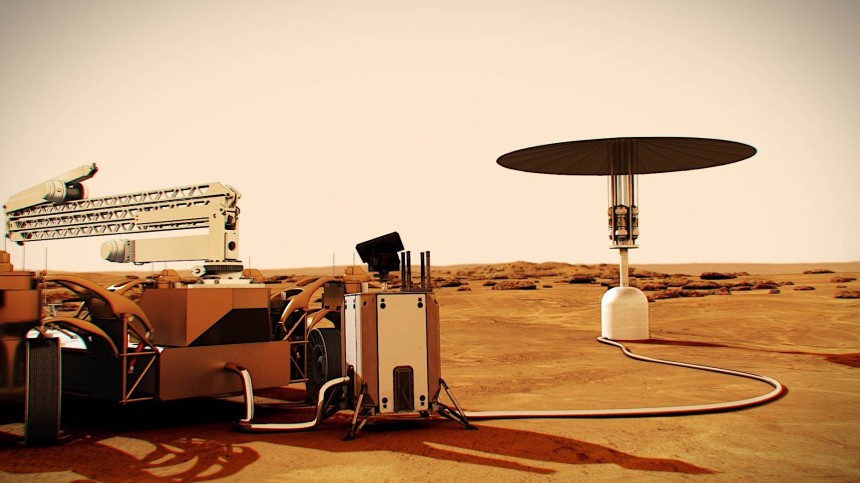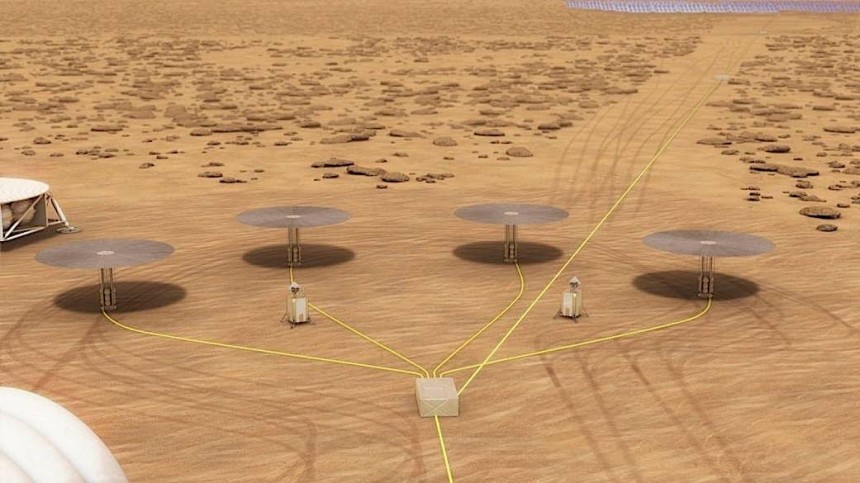It’s no secret now that, for the first time in history, humanity is seriously looking to populate other bodies in the solar system. The prime targets are the good old Moon and Mars, and already plans are being drawn up to allow humans not only to live, but also thrive on both worlds.
For that to happen, though, a lot of challenges have to be overcome first. One of the most important is power generation, because without electricity nothing we humans do is worth anything.
Generally speaking, space exploration has long depended on batteries, solar energy, or some type of chemical reaction for its needs. Some nuclear generators were involved from time to time, especially on the Martian rovers, but none of these systems are powerful enough to sustain a settlement on another world for long stretches of time.
This is why back in November of last year the American space agency, together with the Department of Energy, launched a call for help from American companies, seeking to develop a fission surface power system to be deployed on the Moon (at first).
The idea builds on the findings of something called Kilopower Reactor Using Stirling Technology (KRUSTY), an experiment which concluded in 2018. It calls for the “development of a fission surface power system for safe, efficient, and reliable electrical power,” one that could sustain prolonged missions to the two alien worlds.
This type of reactor was chosen because it has several advantages over other systems, like solar cells, batteries, and fuel cells (which will continue to be used in conjunction with the new tech).
First of all, fission reactors do not depend on sunlight, or refueling to operate. They can work for long periods of time even in shadowy craters or during lunar nights. They are small, and don’t weigh much, meaning it won’t be all that difficult to transport on-site.
NASA plans to have a reactor system with a total output of 40 kilowatts, which according to the space agency is enough to power 30 average households for ten years, but also “robust operations on the Moon and Mars.”
The energy generated by the technology is supposed to be used to power rovers and other gear, including for experiments, help with the generation of water and fuel, but also for life support.
NASA asked those interested to come up with a design that is suitable for autonomous operation from the deck of a lunar lander or a lunar surface rover. At the time of writing, it’s unclear how many companies are interested in taking part in the project.
If some will get involved, NASA will select the best idea and ask companies to come up with the initial designs in up to a year from that moment. It is unclear when the submission of ideas closes, but NASA said it is planning to have the technology ready to launch within a decade, which would mean the early 2030s. The initial test will be conducted on the Moon.
“Plentiful energy will be key to future space exploration,” said in a statement when the announcement was first made Jim Reuter, associate administrator for NASA’s Space Technology Mission Directorate (STMD) in Washington, the body in charge with funding the fission surface power project. “I expect fission surface power systems to greatly benefit our plans for power architectures for the Moon and Mars and even drive innovation for uses here on Earth.”
Aside from coming up with a reactor to power lunar missions, NASA might use some of the ideas got from this to come up with new nuclear propulsion systems for rockets and spaceships, something that would probably completely change the future of space exploration.
Generally speaking, space exploration has long depended on batteries, solar energy, or some type of chemical reaction for its needs. Some nuclear generators were involved from time to time, especially on the Martian rovers, but none of these systems are powerful enough to sustain a settlement on another world for long stretches of time.
This is why back in November of last year the American space agency, together with the Department of Energy, launched a call for help from American companies, seeking to develop a fission surface power system to be deployed on the Moon (at first).
The idea builds on the findings of something called Kilopower Reactor Using Stirling Technology (KRUSTY), an experiment which concluded in 2018. It calls for the “development of a fission surface power system for safe, efficient, and reliable electrical power,” one that could sustain prolonged missions to the two alien worlds.
First of all, fission reactors do not depend on sunlight, or refueling to operate. They can work for long periods of time even in shadowy craters or during lunar nights. They are small, and don’t weigh much, meaning it won’t be all that difficult to transport on-site.
NASA plans to have a reactor system with a total output of 40 kilowatts, which according to the space agency is enough to power 30 average households for ten years, but also “robust operations on the Moon and Mars.”
The energy generated by the technology is supposed to be used to power rovers and other gear, including for experiments, help with the generation of water and fuel, but also for life support.
NASA asked those interested to come up with a design that is suitable for autonomous operation from the deck of a lunar lander or a lunar surface rover. At the time of writing, it’s unclear how many companies are interested in taking part in the project.
“Plentiful energy will be key to future space exploration,” said in a statement when the announcement was first made Jim Reuter, associate administrator for NASA’s Space Technology Mission Directorate (STMD) in Washington, the body in charge with funding the fission surface power project. “I expect fission surface power systems to greatly benefit our plans for power architectures for the Moon and Mars and even drive innovation for uses here on Earth.”
Aside from coming up with a reactor to power lunar missions, NASA might use some of the ideas got from this to come up with new nuclear propulsion systems for rockets and spaceships, something that would probably completely change the future of space exploration.








